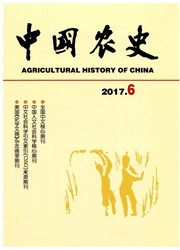

 中文摘要:
中文摘要:
张马屯遗址作为后李文化的最早遗存之一,提供了全新世早期山东高地先民生业经济的直接证据。张马屯遗址植物考古分析表明9000年前先民利用的植物种类十分丰富,在大量采集野生植物果腹的同时,先民已经开始栽培和驯化粟类作物,但驯化进程十分缓慢。结合动物遗存和其他考古学证据发现,全新世早期山东高地的先民仍以广谱式的采集—狩猎—渔猎经济为最重要的生计方式,动植物的栽培和早期驯化已经出现,但对先民食谱整体上的贡献仍有限。
 英文摘要:
英文摘要:
Zhangmatun site was occupied at the early Holocene and provided us the direct evidence of the subsistence at the Shandong Highlands of East China of that critical period.Systematic archaeobotanical study of that site suggests that abundant wild plants were used and the cultivation and domestication of millets which the process was slowly and limitted contribution,has been occurred 9000 years ago.Combining with animal remains and other archaeological evidences,it revealed that a broad-spectrum strategy which consists of hunting,gathering and fishing was the foremost subsistence for the humans on the Shandong Highlands in early Holocene.
 同期刊论文项目
同期刊论文项目
 同项目期刊论文
同项目期刊论文
 Reconstructing the food structure of ancient coastal inhabitants from Beiqian village: Stable isotop
Reconstructing the food structure of ancient coastal inhabitants from Beiqian village: Stable isotop The early Holocene archaeobotanical record from the Zhangmatun site at the northern edge of the Shan
The early Holocene archaeobotanical record from the Zhangmatun site at the northern edge of the Shan An important military city of the Early Western Zhou Dynasty: Archaeobotanical evidence from the Che
An important military city of the Early Western Zhou Dynasty: Archaeobotanical evidence from the Che 期刊信息
期刊信息
